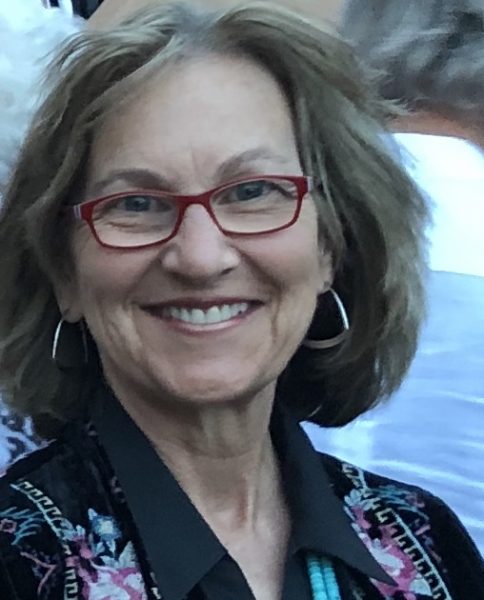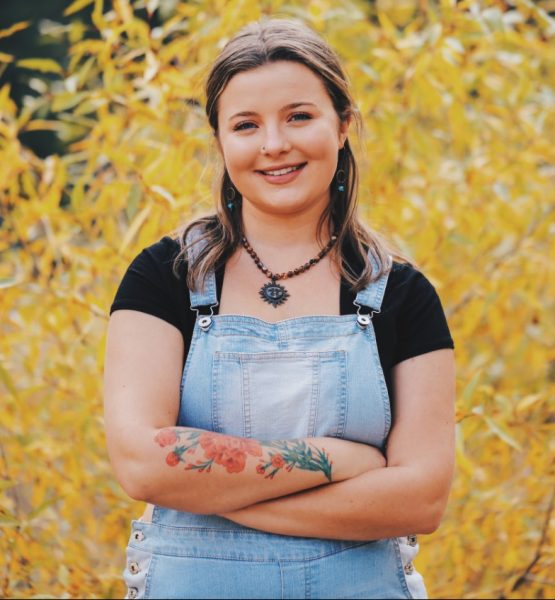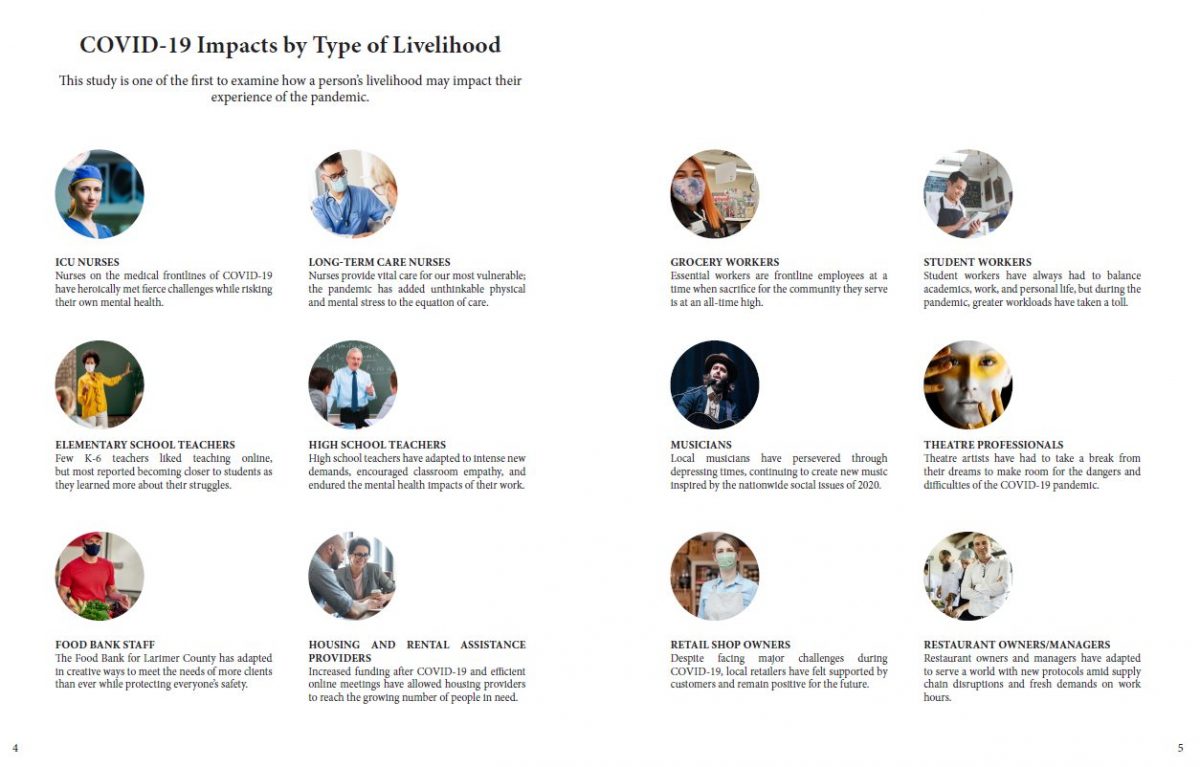“Here and Now:” Anthropology students take a hard look at COVID impacts on livelihoods
Joshua Zaffos
For all the worry, isolation and loss of the COVID-19 pandemic, a group of Colorado State University anthropology students have found a surprising – positive – outcome: Nurses, teachers and even restaurant wait staff and other service-industry employees experienced new forms of empathy, appreciation and community connection. Through a Spring 2021 class-wide project, students in Methods in Cultural Anthropology (ANTH 441) researched and surveyed workers across 12 different livelihoods in Fort Collins, Colorado, carrying out a first-of-its-kind ethnographic study of how livelihoods have impacted how people have experienced the pandemic.

“All these livelihoods show us something about how society functions,” said Kate Browne, University Distinguished Professor and trailblazing cultural anthropologist who developed and led ANTH 441 before retiring this spring after a 26-year career at CSU. “I wanted students to learn directly how people across society are experiencing the pandemic.”
Browne and ANTH 441 students compiled and published their findings in “Here and Now: Life in the Pandemic,” a 58-page report and accompanying poster (PDF link).
During the spring course, Browne taught students methods for conducting ethnographic research and surveys and eventually dispatched students to actually use those practices. Students selected different livelihood categories, including healthcare, retail, restaurants and food service, K-12 education, supermarkets, the arts, and other fields. They then researched the livelihoods and made contacts, and designed and prepared surveys. The class submitted a research plan and gained Institutional Review Board approval for conducting original studies and interviews with individuals, enabling undergraduates to learn about this process and important protocols.
“There hasn’t been much ethnographic research on livelihood groups’ struggles with COVID,” said Claire Taagen, a junior Anthropology major and an ANTH 441 student. “I think that was very special that we were able to be some of the first people to do so and to be able to publish our work as undergraduates.
“Dr. Browne challenges students in a supportive way. She knows that we are capable of so much even if we may not recognize that ourselves. She wants us to have as many opportunities and different challenges as undergraduates to fulfill our time at CSU and prepare us for our future endeavors.”

The compiled findings highlight the conditions and hardships across different livelihoods and present a community-wide examination into how ICU nurses, teachers, grocery clerks, wait staff, and musicians have variously coped socially, financially, and other ways during the pandemic. While individuals across many livelihoods reported personal and work-related mental health and stress factors and other adaptations, the researchers also observed those new and deeper feelings of empathy, gratitude and community.
“We know COVID has produced a lot of stress and challenges, so I was motivated by a desire to expose students to something meaningful during a difficult time,” said Browne, who has spent much of her teaching career facilitating applied learning and undergraduate research opportunities.
“Part of the magic of experiential learning is that we nudge each other out of our comfort zone,” she continued. “By doing something new and original, and by doing it yourself– the practice of it, the content, the implications on absorption and curiosity, and then the potential for application – is unlike anything else.”
Read “Here and Now: Life in the Pandemic” online.
